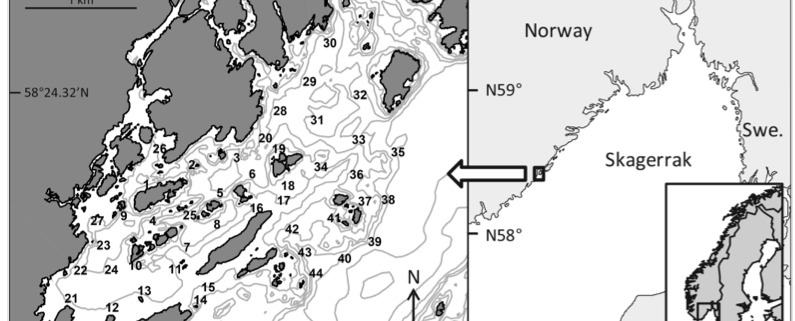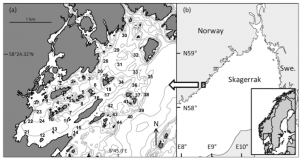The Truth Behind Catch-and-Release of Atlantic cod
By Jessica Wingar, RJD Intern
With decreasing fish stocks, there has been an increase fishing regulations. One of these categories of fishing is recreational fishing, which includes catch and release fishing. In catch and release fishing, the fish is released back into the ocean after being reeled in. Despite the fact that this practice puts the fish back in its habitat, the process can have detrimental effects on the fish. An example of one of these disadvantages is the damage caused by the hook; the hook can become lodged in the body cavity of the fish and cause damage that could cause mortality. There are numerous different studies that can be conducted to look at post release in fish, but telemetry studies are becoming more numerous because they allow the fish species to be studied in its habitat and provides effective data. In this method, tags are surgically inserted into the fish and the fish are released back into the environment. In order to differentiate between the effects of surgery and release, the fish are captured again after a surgery recovery period to find out the affects of the release. Since the fish are captured again, it is critical that the species studied does not live in a large area. This study method was used to examine Atlantic cod in Norway.
Atlantic cod were chosen as the study species because they have a known small range that they inhabit. In addition, they are a commonly released fish. In this study, the researchers wanted to study what the post release effects would be of the fish coming from depth. The reason why the researchers wanted to study the effects of depth is because Atlantic cod have a closed physoclistous swim bladder, which means that their swim bladder can expand if they are pulled from a depth, such as what occurs when they are reeled in. In this study, eighty cod were surgically implanted with acoustic transmitters and the fish were tagged. Ultrasonic receivers were placed in the study area to determine how the fish were moving up and down the water column. These fish were released, and after a recovery time, nine were recaptured in order to determine the affects on vertical migration after release.
This study demonstrated that there was not a significant difference in vertical migration after the release of all eighty cod. In addition, there was not a significant difference in vertical migration after the release of the nine cod caught again after the surgery. Although the results are not statistically significant, the researchers found that some small-scale changes could occur immediately after release, but that these changes are not permanent. However, these small-scale changes could have implications for successful mating and other behaviors. The reason behind why some cod were affected, while others were not could lie in the fact that physiology differs between each individual. In conclusion, with proper fishing equipment and practices, catch and release fishing has few detrimental effects on Atlantic cod in Norway.
Studies like this one are increasingly critical to the conservation of fish species, such as Atlantic cod. They are important because they provide a platform to promote safe fishing practices and methods, such as using a circle hook, for recreational fishermen. If more fishermen who fish for sport, used safe fishing techniques, then the cod fished will not be as affected by catch and release fishing.
Reference
Ferter, K., Hartmann, K., Kleiven, A.R., Moland, E., and Esben Moland Olsen. “Catch-and-release of Atlantic cod (Gadus morhua): post-release behavior of acoustically pretagged fish in a natural marine environment.” Canadian Journal of Fisheries and Aquatic Sciences 72 (2015):1-10.






Leave a Reply
Want to join the discussion?Feel free to contribute!